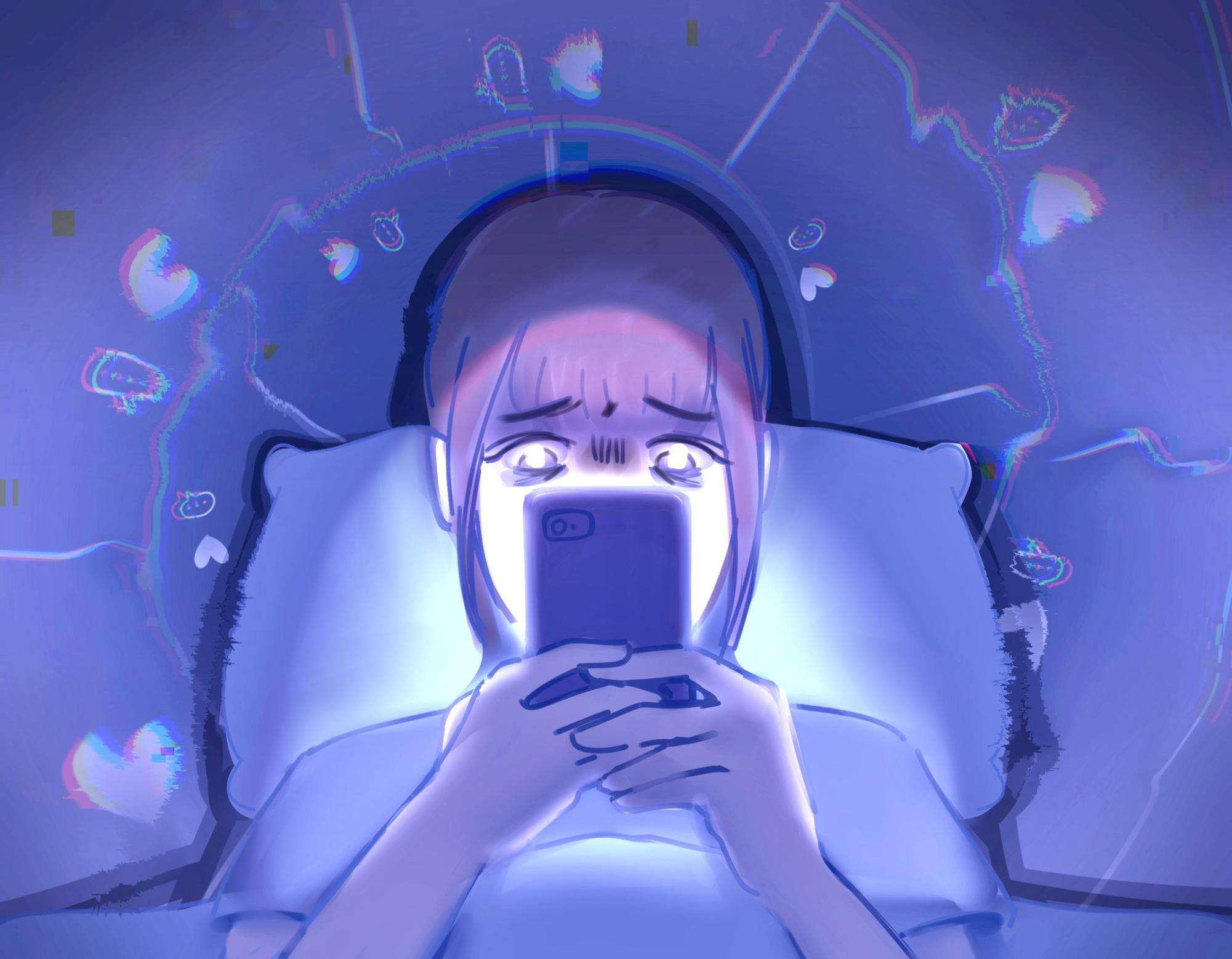Doomscrolling, the compulsive consumption of negative online content, has become a hallmark of digital age anxiety. With news of crisis and conflict dominating screens, this habit exposes people to a constant flow of troubling news that takes a hard psychological toll.
“Doomscrolling is addictive because of the immediate gratification of being able to get content, whatever that content that is we’re getting,” academic counselor Jonah Alves said. “It’s easy — you’re just flipping up or down and constantly getting new videos.”
48% of teens feel overwhelmed by the news, as social media algorithms like TikTok and Instagram evoke negative emotions like fear, anger or sadness to keep users engaged. For instance, once a user clicks on a video about a disaster, the app may begin recommending more stories about tragedies, political scandals or public health crises. The ease of accessing these media platforms makes it effortless to scroll for hours.
Psychology teacher Julie Turchin explained that doomscrolling hooks users through operant conditioning, the same principle that underlies habits like gambling.
“The systems are set up to find things that you find really interesting, and send you more of them,” Turchin said. “They’re continuous, so there’s no end to it. Focusing on negativity reinforces certain neural pathways. That’s how someone ends up always looking for the negative.”
The behavior of doomscrolling activates in the brain’s threat-detection system, where the amygdala, or fight-or-flight sensor, drives us to keep scanning for potential dangers. When the amygdala is on high alert, our nervous system releases an immense amount of stress hormones like cortisol and adrenaline. Our brains are able to handle short bursts of stress, but doomscrolling keeps the nervous system activated far longer than it can tolerate.
Over time, this sustained stress can heighten anxiety, worsen mental well-being and contribute to popcorn brain, which occurs when your brain becomes accustomed to the overstimulating nature of social media and struggles to focus on the slower pace of real life.
Like any other addictive behavior, doomscrolling also triggers the brain’s reward system, causing dopamine spikes that leave users drained when those levels drop back to normal. Neuroscience Club vice president Aubrie Su (10) noted that she also struggles to control her scrolling habits.
“I’ve noticed that every time I finish scrolling, I feel incredibly guilty,” Aubrie said. “Harker is a very high pressure environment, and as a result, people will try to alleviate this stress through doomscrolling.”
Doomscrolling is not just addictive — it damages attention spans and sleep cycles. Exposure to high volumes of negative content before bed is linked to delayed melatonin production, resulting in worse sleep quality. In turn, sleep deprivation worsens anxiety and memory retention, creating a feedback loop of cognitive fatigue.
“Oftentimes we’re found doomscrolling at night,” Alves said. “Even when you put your phone away, you start to worry more. It’s hard to just turn your brain off and completely forget about what you were scrolling through or what you just saw. All of those thoughts are now sitting in your head. How do you compartmentalize that? How do you take that away and realize that’s part of a bigger world, or maybe it’s not even accurate information?”
Breaking the cycle of doomscrolling starts with self-awareness — recognizing the habit as a choice rather than a default can make all the difference. There are numerous ways to regain control, including simple steps like setting a time limit, taking regular breaks or turning off notifications, which can help users step away from the constant flow of negative content.
“Try to change the tendency to pick up your phone, in which case you could either put in an app that prevents you from picking up your phone, or put your phone somewhere else,” Turchin said. “It’s not the phone per se, but it’s the apps you’re accessing.”
By pausing to consider what drives the urge to scroll — whether boredom, anxiety or a need for connection — people can begin setting boundaries and redirecting their attention towards activities that give them more control and make them feel less drained.
“We need to be realistic,” Alves said. “We need to be intentional. At night, when you’re lying in bed and you start scrolling, think, ‘What am I doing? Why am I doing this? What am I getting out of it? What do I want at the end?’”




